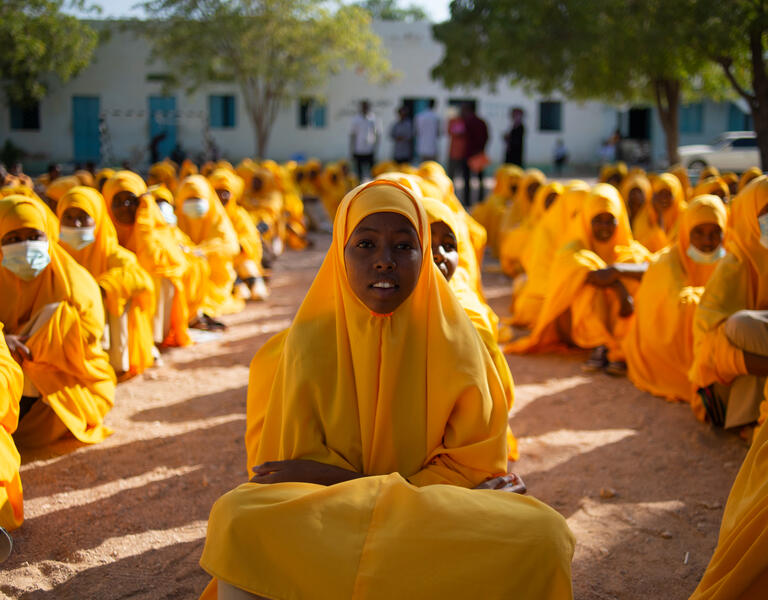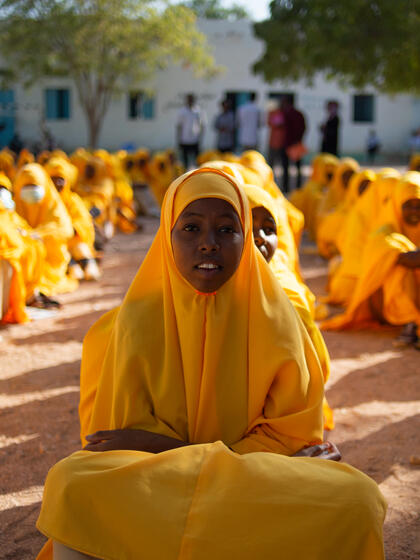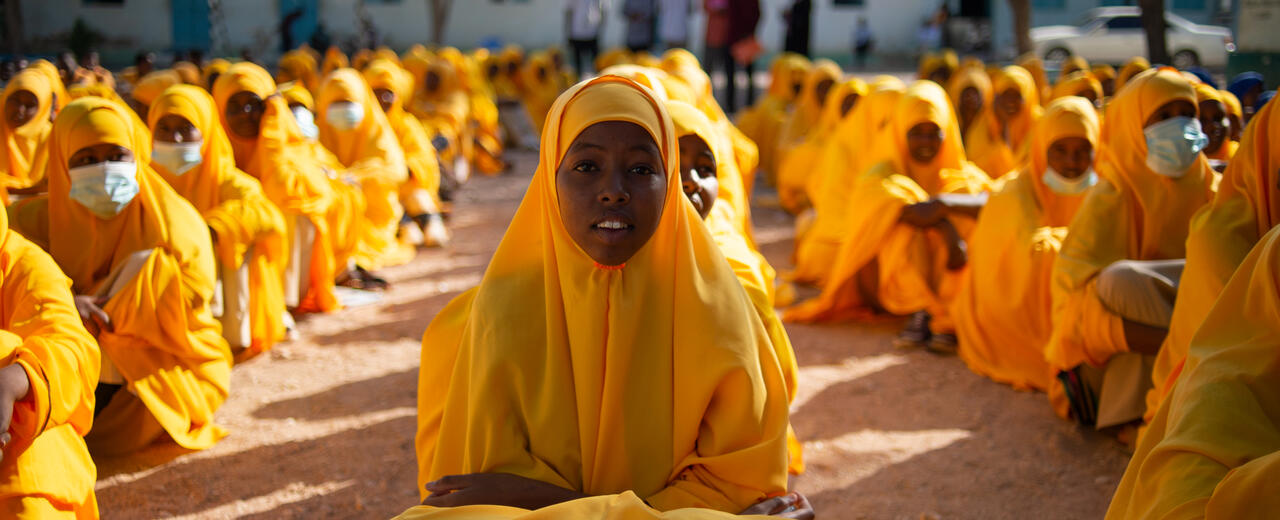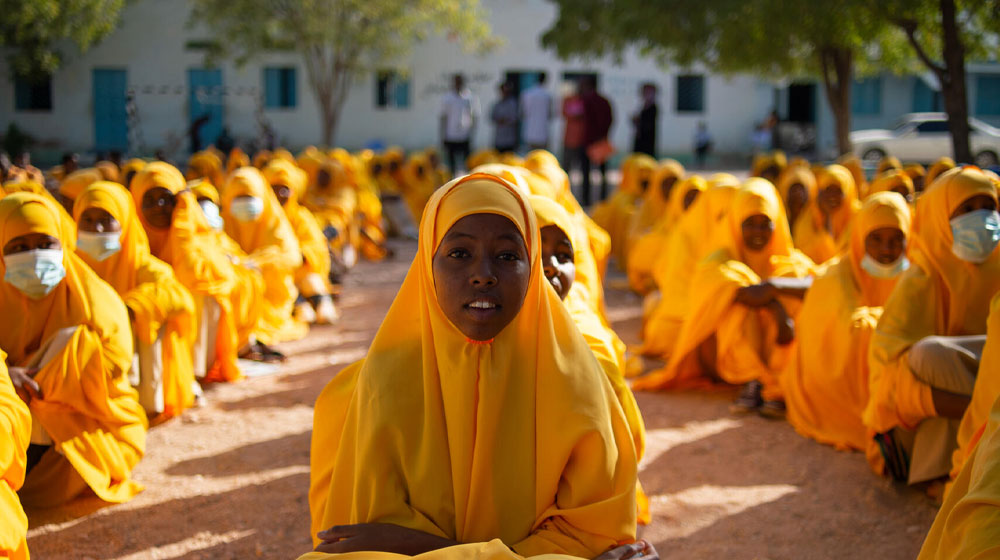Female genital mutilation, a practice that involves altering or injuring the female genitalia for non-medical reasons, is internationally recognized as a violation of human rights. An estimated 230 million girls and women worldwide have undergone the practice.
A global issue, female genital mutilation (sometimes abbreviated as FGM or referenced by other names) is reported in 92 countries across all continents. Data from about a third of the countries where it is practiced indicate a decline over the last three decades, with 1 out of 3 girls undergoing the practice compared with 1 out of 2 girls previously. The majority of men and women – two thirds – want this practice to end. However, these positive results would need to be stepped up 27-fold to meet the target of ending the practice by 2030.
UNFPA estimates that 68 million girls are at risk of undergoing female genital mutilation between 2015 and 2030. To protect these girls, we all must remain invested to meet the zero target, through wider partnerships and cost-efficient approaches to scaling up interventions that challenge the social norms that perpetuate the practice. Governments, donors, the private sector, communities, grassroots organizations, girls, women, boys and men all have a role to play as agents of change to ensure that girls grow up free from female genital mutilation.
Female genital mutilation refers to procedures involving partial or total removal of the external female genitalia, or other injury to the female genital organs for non-medical reasons. The practice, which is perpetuated through deeply entrenched social norms, can cause short- and long-term health complications, including chronic pain, infections, anxiety, depression, birth complications and infertility, and can also lead to death. The health cost of treating complications from the practice is estimated to be US$1.4 billion per year.
In every society where it is practiced, female genital mutilation is a deeply rooted social norm. In some societies, for example, it is considered a rite of passage. In others, it is seen as a prerequisite for marriage. Some communities believe it is a religious requirement. Because female genital mutilation may be considered an essential part of a culture or identity, it can be difficult for families to decide against having their daughters subjected to it. People who reject the practice may face condemnation or ostracism, and their daughters are often considered ineligible for marriage. As a result, even parents who do not want their daughters to undergo the practice may feel compelled to participate.
Evidence shows that social marketing and media, involvement of religious and cultural leaders and health workers, as well as health education and formal education are effective in changing attitudes. There is a need to build the pace and scale up such interventions to contribute to the elimination of female genital mutilation.
Approximately 1 in 4 girls and women aged 15 to 49 who have undergone female genital mutilation – 52 million individuals in total – were subjected to the procedure by health workers. In some countries, this proportion rises to as high as 3 in 4. The prevalence is particularly alarming among adolescents, who are twice as likely to be affected compared with older women.
Female genital mutilation can never be “safe,” and there is no medical justification for the practice. Even when performed in a sterile environment by health workers, there can be serious consequences immediately and later in life. Medicalized female genital mutilation offers those subjected to it a false sense of safety. Health workers who perform it are violating girls’ and women’s rights to life, physical integrity and health, as well as violating the professional code of conduct to “do no harm.”
UNFPA works in partnership with the health sector, which includes midwives who make up the largest health workforce at the facility and community level. The aim is to enable health workers to resist social pressure to perform female genital mutilation and to proactively advocate and counsel on prevention of the practice to the individuals and communities they serve.
UNFPA operates in 150 countries globally. Ending female genital mutilation is one of the three transformative results in UNFPA’s strategic plan (2022 – 2025).
Moreover, UNFPA and UNICEF together lead the largest global programme to end the practice, the UNFPA-UNICEF Joint Programme on the Elimination of Female Genital Mutilation, which has been operational since 2008. The Joint Programme supports holistic and integrated approaches and interventions at global, regional and national levels, with the aim of establishing policy and legal frameworks, galvanizing communities to abandon the harmful practice, providing related services and supporting data and evidence generation to better inform advocacy and programme initiatives.
The programme has been working in partnership with governments, civil society, communities, regional and international entities and development partners at various levels. The Joint Programme provides direct support to 18 countries (Burkina Faso, Djibouti, Egypt, Eritrea, Ethiopia, The Gambia, Guinea, Guinea Bissau, Indonesia, Kenya, Mali, Mauritania, Nigeria, Senegal, Somalia, Sudan, Uganda and Yemen). It also has a range of initiatives and forums to share technical knowledge and expertise with other countries and organizations beyond these 18 countries.
Updated 3 February 2025

💡 #DidYouKnow: 68 million girls are at risk of undergoing female genital mutilation (FGM) by 2030?
See how @UNFPA is partnering with @UNICEF to #EndFGM: https://unf.pa/fgu



